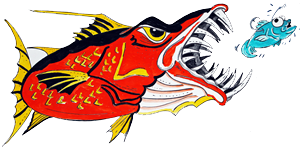Fish In Myrtle Beach
Myrtle Beach, SC is a popular destination for inshore fishing charter, with a variety of species available to catch in the area’s creeks, bays, and marshes. Here’s a guide to some of the most commonly targeted inshore fish species in Myrtle Beach, South Carolina:
- Redfish: Also known as red drum, this is a prized game fish that can grow up to 50 inches long and weigh over 50 pounds. Redfish can be caught year-round in Myrtle Beach, with the best months being September through November.
- Flounder: This flatfish can be caught year-round in Myrtle Beach, with the best months being May through October. Flounder can weigh up to 10 pounds and are known for their tasty, white flesh.
- Speckled trout: This is another popular game fish that can be caught year-round in Myrtle Beach, with the best months being October through December. Speckled trout typically weigh between 1 and 4 pounds.
- Black drum: This fish can be caught year-round in Myrtle Beach, with the best months being October through February. Black drum can weigh up to 90 pounds and are known for their powerful fight.
- Sheepshead: This fish can be caught year-round in Myrtle Beach, with the best months being April through August. Sheepshead can weigh up to 15 pounds and are known for their sharp teeth, which make them a challenging catch.
Whether you’re a seasoned angler or a beginner, Myrtle Beach inshore fishing charters with North Myrtle Beach Fishing Charters offer a fun and exciting way to explore the area’s waterways and catch a variety of fish species. Be sure to book your charter with a reputable guide like Captain Keith Logan who knows the best spots and techniques for targeting the species you’re interested in.
Inshore Fish Species Caught In Myrtle Beach, SC
Redfish
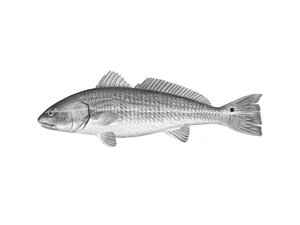
The redfish, also known as spot tail, red drum, channel bass, and puppy drum, is a powerful fish that puts up a great fight when caught. In North Myrtle Beach, they are commonly found in the creeks or at the jetties and can be caught with a variety of baits, such as shrimp, mullet, mud minnows, and cut baits. The preferred bait may vary depending on the time of year and location.
Redfish have distinctive copper/orange skin and a black spot on their tail, sometimes having more than one spot. This unique feature serves as a form of confusing camouflage when larger predators, such as dolphins, are trying to eat them. Redfish often school together and get close when threatened, and the spot on their tail looks like an eye to hungry predators. When the school gets close together and all the spots are grouped up, it is harder for the predator to decipher where the head and tail are on an individual redfish.
The fall months of October to December are the best time to catch redfish, although they can still be caught almost year-round. During October and November, larger redfish, also known as bull reds, can be found near the jetties or just off the beach about a mile out. These bull-reds can weigh upwards of 40 lbs and put up a strong fight. However, the bigger redfish must be released as the legal slot for keeping redfish is between 15-23 inches. Redfish within the slot limit is excellent to eat.
Click to Learn More about: Red Drum
All in all, catching any size redfish is a thrilling experience that will test the skills of any angler.
Flounder
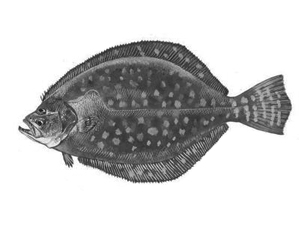
Flounder fishing in Myrtle Beach, South Carolina is a popular pastime for locals and tourists alike. With four species of flounder available in the area, including summer flounder, southern flounder, winter flounder, and gulf flounder, there is always a chance of catching something exciting. While winter flounder is not typically found during inshore and nearshore fishing in the warmer waters, the other three species can be caught.
The most commonly caught flounder species in the area are summer and southern flounder, which usually range from 10 to 17 inches in length. However, larger flounders over 20 inches are also possible to catch, earning the nickname “doormat” due to their flat shape and size. The legal minimum size for keeping flounder is 16 inches.
Flounder are opportunistic predators that lay in ditches, holes, sandbars, and oyster beds waiting for baitfish or shrimp to pass by. One of the challenges of flounder fishing is their biting behavior. Flounder will typically bite at the tail of the bait before spinning it around to eat it headfirst. Patience is key when fishing for flounder, as setting the hook too early can result in a missed catch.
Flounder is a delicious fish and is highly sought after for its taste. A single flounder can yield four fillets, making it an excellent catch for a meal. Whether you are a seasoned angler or a beginner, flounder fishing in Myrtle Beach is an exciting experience that is sure to yield a great catch.
Click to Learn More about: Flounder
Spotted Sea Trout
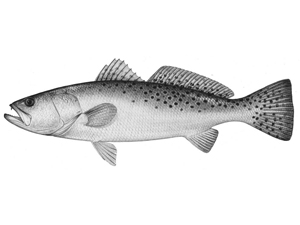
Spotted sea trout is a highly sought-after game fish in Myrtle Beach due to its beautiful colors and black spots. Sometimes called speckled trout or winter trout, this fish is a member of the drum family and has no relation to any freshwater trout. The larger schools of speckled trout usually show up in the creeks and around the jetties in the Atlantic ocean during October, November, and December, making those months the best time to catch them.
While it is rare to catch a speckled trout in the warmer months, if caught, it is usually a big one. When an angler catches a speckled sea trout that is close to 20 inches or larger, it is known as a “gator trout.” The most popular way to catch speckled trout is by using an adjustable cork with a live shrimp. However, they can also be caught using live mullet with a Carolina rig or a three-way swivel rig.
Artificial baits such as soft plastic swim baits or shrimp imitations on a jig head are also effective for catching speckled trout. Additionally, hard plastic baits like mirror lures, jerkbaits, lipless crankbaits, or zara spooks can be used. Different anglers have varying opinions on the best artificial lure for catching speckled sea trout.
Speckled sea trout provide an excellent fight on light tackle and are also delicious to eat. They are a great catch for any angler, especially during the peak season when the larger schools of speckled trout are present.
Click to Learn More about: Speckled Sea Trout
Black Drum
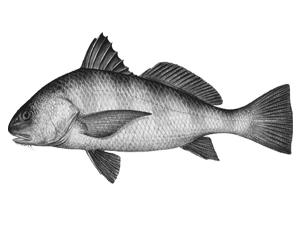
Black drum is a fish that can put up a good fight like its cousin, the red drum (redfish). They are often found in schools and prefer to eat a variety of crustaceans and cut bait. The easiest way to fish for black drum is by using a shortened Carolina rig with a small piece of shrimp. Compared to redfish, black drum have a broader shape and their mouths are located more on the underside of the chin. They can also have distinct black and white stripes, sometimes leading to confusion with sheepshead. Additionally, some black drum can be almost solid black in color.
In Myrtle Beach, the black drum can usually be found at lower tides near oyster beds and deep holes inside the inlet. During fall, the bigger black drum tends to show up around the jetty rocks and more schools are seen in the creeks. The best time to target black drum is typically in November and December, although they can still be caught at other times of the year.
Larger black drum provide an excellent fight and tend to swim against the current when hooked. They are also great to eat and can be prepared in various ways. In summary, the black drum may be a lazier cousin of the red drum, but they still put up a good fight and provide a fun challenge for anglers.
Click to Learn More about: Black Drum
Inshore Fishing Charters Myrtle Beach, South Carolina
If you’re looking for a great fishing experience in Myrtle Beach, inshore fishing charters are a fantastic option. Inshore fishing trips offer a unique opportunity to catch a variety of fish species, including Red Drum, Black Drum, Speckled Sea Trout, Flounder, and Sheepshead.
There are many different inshore fishing charters available in The Grand Strand, each with its own unique experience. Some charters specialize in fly fishing, while others focus on light tackle. With knowledgeable and experienced local fishing guides, these trips offer an opportunity for anglers of all ages and skill levels to try their hand at catching some of the most sought-after fish in the area.
When choosing an inshore fishing trip, it’s important to consider factors such as the length of the trip, the type of equipment provided, and the experience level of the guide. Additionally, it’s important to ensure that the charter is properly licensed and insured like North Myrtle Beach Fishing Charters.
Overall, inshore fishing charters in Myrtle Beach are a great way to experience the thrill of fishing in one of the most beautiful areas of South Carolina. Whether you’re a seasoned angler or a beginner, there’s something for everyone on an inshore fishing charter. So grab your fishing gear and get ready for an unforgettable day on the water!
